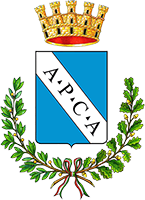
The first historic settlement is documented in the territory of the Etruscan-Italic temple of St. Mary in Canale built around the fourth century BC along the Amerina Way (about one km north towards Castel Aquila), which stood on the border points between the territories of Ameria (Amelia) and Tuder (Todi). The structures of the temple were later used in medieval times for the construction of a church and an adjoining Benedictine monastery, suppressed in 1399. The foundation of the Castle of Sambucetole (Castrum S. Bucetoli or S. Focetoli in ancient inscriptions) as an outpost of Amelia against Castle Laguscello, owned by Clairvaux, and in defense of their territories against Todi, dates from the end of the thirteenth century; the first documents in which the name of the castle is first reported are the Amelia Statutes of 1308. Following the assault in Sismano, Captain Francesco degli Atti devastated Sambucetole in retaliation in 1408. The country was then destroyed by Paolo Orsini in 1413 and the inhabitants fled. In 1425, the City of Amelia undertook to rehabilitate the castrum and recalled with a notice, the absent Sambucetolani, on pain of confiscation of property. The castrum was rebuilt and reinhabited only in 1471, thanks to the efforts of a certain Messer Nicolao Coclite, noble Peloponnesian Greek, who led thirty Schiavoni settler families (name given to the Balkan Slavs) designated to cultivate the land and to live in the Castle of Sambucetole. Remember that until the Second World War the inhabitants of neighboring countries used to call “Schiavoni” the inhabitants of Sambucetole.
The ancient castle was completely surrounded by walls and possessed a single gateway; several works carried out after 1880 have altered the original structure; some sections of the perimeter wall remain and three defensive towers, one of which became the current bell tower in 1793. The parish church is dedicated to St. Matthew the Apostle and Evangelist, and dates back to the fourteenth century; over time it has undergone several transformations and rearrangements. Today, behind the altar, you can see a painting dating 1639 by the Sienese painter Marcantonio Grecchi, depicting the patrons St. Matthew the Evangelist, St. Ubaldo and co-patron S. Rocco and the Holy Family. In the right chapel, a painting of the Madonna of the Rosary between Saints (mid-seventeenth century.); beneath the altar, a wooden statue of Christ Deposed called “Dead Christ” (17th Century). In the left chapel, a painting of SS. Anthony Abbot, Anthony of Padua, Magdalene, Apollonia and the Holy Trinity (first half of the seventeenth century.); beneath the altar, the Body of San Clemente Martyr, patron since 1785 when the parish priest Msgr. Stefano Perelli transferred the saint’s remains from the cemetery of San Ciriaco in Rome to Sambucetole, placing them in an urn of wood in the parish church. May 16th we celebrate the patron. Places of interest: southeast of the castle, along the Via Amerina, the Convent of the Capuchin Friars and the Church of St. James in Redere is attested in a first document in 1145 as the seat of a lay confraternity in service of pilgrims who traveled to Via Amerina; in 1188 the church with the adjoining hospital came under the jurisdiction of the Abbey of St. Paul Outside the Walls in Rome. Starting from 1550 it was occupied by the Capuchin Friars. The church dedicated to St. Leonard, used for burials until 1634, in the neighborhood of the farm in the vicinity of the bridge of Via Amerina on the Rio Grande.
The rural church of St. Christopher on the border with the possessions of Todi and near the Saint Firmina, in Medieval times, then restored in 1848 by the Bishop Bartocci Brasca. The rural church of St. Mary in Canale, near the ancient convent of the Benedictines. In the woods east of the castle ruins of the Church of St. Angelo in Ciricano, the first Benedictine monastery until 1408, then the convent of the Augustinian friars from 1449 to the Napoleonic period. 1 km north, the ruins of the Castle of Lacuscello: a remarkable view from the steep slope that descends on the underlying lake formed by the Rio Grande.
SAMBUCETOLE: RESTI DEL CASTELLO DI LACUSCELLO
Lacuscello, also called Agoscello or Lagoscello, was a medieval castle with an original core from the 10th – 11th Century, probably built by Arnolfi as a fortress to control the underlying Via Amerina. Located at the northern boundary of the possessions of Amelia and Todi was a fortress of primary importance during the struggles between the two municipalities. The powerful Todi family of Clairvaux bought the castle in the thirteenth century; it became, along with Canale, a stronghold of the family where the belligerents withdrew on several occasions during the centuries-old struggles with the Guelph faction led by the Todi family Atti. In the tithes records of the years 1275 and 1279 in the text “Rationes Decimarum Italiae” the name of the ancient church of Lacuscello, dedicated to San Biagio is mentioned. In 1235 Pope Gregory IX takes the oath of allegiance of the lords of Lacuscello; in exchange for the protection received, Castle Lacuscello undertook to pay the Church 26 Cortonesi denar for each “fuoco” (family).
1275-1279 Certifies the tithing by Johannes pastor of the Church of San Biagio di Lacuscello. 1316: James Richard Annibaldi, Roman nobleman and owner of the Castles of Canale and Lacuscello divides his property amongst his sons; Il debrandino is entrusted to the Castle Canale, to Richard, Castle Lacuscello. In his will Annibaldi leaves part of the property of the castle “tied” to the Church and therefore on the 8th of March, 1332 the treasurer of the Patrimony of St. Peter, Stephen Lascoutz, takes possession. 1332: The “Records of the Patrimony of St. Peter in Tuscia” show that Guardian and Rector of Castle Lacuscello for the part due to the Church is Ser Matteo Cesi. 1337: The Chiaravallesi buy Lacuscello which becomes a fortress from which they hurled raids against neighboring countries. Also in this year a trial takes place against the inhabitants of Sambucetole, who were said to have launched insults against Raymondo de Ramis, warden of Lacuscello.
1464: Pope Pius II invites the towns of Amelia and Todi to destroy the Ghibellines castles of Lacuscello and Canale. Once demolished, they are purchased by the City of Amelia at a cost of 2,000 ducats.


